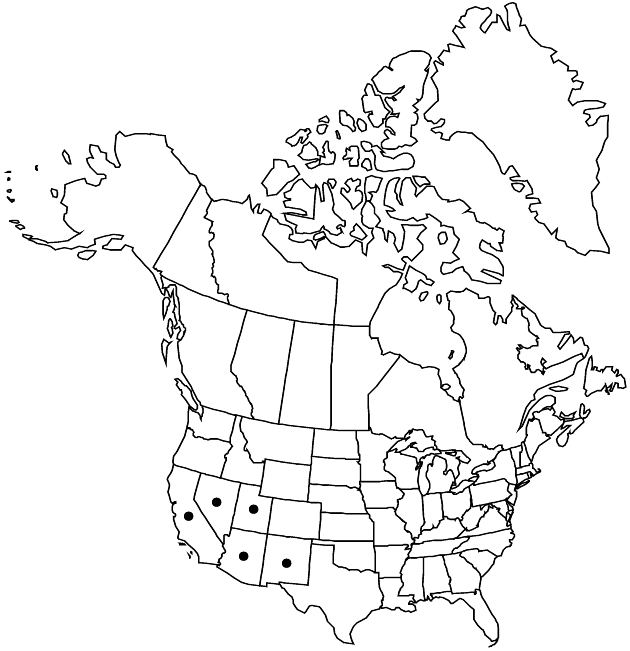Difference between revisions of "Dieteria asteroides"
in W. H. Emory, Not. Milit. Reconn., 141. 1848.
FNA>Volume Importer |
FNA>Volume Importer |
||
| Line 19: | Line 19: | ||
}}<!-- | }}<!-- | ||
| − | --><span class="statement" id="st-undefined" data-properties=""><b>Biennials </b>or short-lived perennials. <b>Stems</b>, branches, and peduncles usually hairy, puberulent, or canescent, often sparsely stipitate-glandular (glabrous or densely stipitate-glandular in <i></i>var.<i> glandulosa</i>). <b>Leaf</b> blades lanceolate to oblanceolate, mid 20–100 × (2–)6–20 mm, margins entire to irregularly serrate, faces puberulent or canescent, often sparsely short-stipitate-glandular (densely, stiffly long-stipitate-glandular in <i></i>var.<i> glandulosa</i>); distal bases cordate to auriculate, clasping. <b>Involucres</b> broadly turbinate to hemispheric. <b>Phyllaries</b> in 5–12 series, spreading to reflexed, apices acute to long-acuminate, 1–6 mm, herbaceous, faces puberulent or canescent throughout (on both indurate bases and foliaceous apices), sometimes sparsely stipitate-glandular (moderately to densely stipitate-glandular in <i></i>var.<i> glandulosa</i>). <b>Receptacles</b> 3.5–7 mm diam. <b>Ray</b> florets pistillate, fertile; laminae white to purple, 10–20 × 0.8–1.5 mm. <b>Disc</b> corollas 5–8 mm. <b>Cypselae</b> glabrous or moderately appressed-hairy.</span><!-- | + | --><span class="statement" id="st-undefined" data-properties=""><b>Biennials </b>or short-lived perennials. <b>Stems</b>, branches, and peduncles usually hairy, puberulent, or canescent, often sparsely stipitate-glandular (glabrous or densely stipitate-glandular in <i></i></i>var.<i><i> glandulosa</i>). <b>Leaf</b> blades lanceolate to oblanceolate, mid 20–100 × (2–)6–20 mm, margins entire to irregularly serrate, faces puberulent or canescent, often sparsely short-stipitate-glandular (densely, stiffly long-stipitate-glandular in <i></i></i>var.<i><i> glandulosa</i>); distal bases cordate to auriculate, clasping. <b>Involucres</b> broadly turbinate to hemispheric. <b>Phyllaries</b> in 5–12 series, spreading to reflexed, apices acute to long-acuminate, 1–6 mm, herbaceous, faces puberulent or canescent throughout (on both indurate bases and foliaceous apices), sometimes sparsely stipitate-glandular (moderately to densely stipitate-glandular in <i></i></i>var.<i><i> glandulosa</i>). <b>Receptacles</b> 3.5–7 mm diam. <b>Ray</b> florets pistillate, fertile; laminae white to purple, 10–20 × 0.8–1.5 mm. <b>Disc</b> corollas 5–8 mm. <b>Cypselae</b> glabrous or moderately appressed-hairy.</span><!-- |
-->{{Treatment/Body | -->{{Treatment/Body | ||
| Line 66: | Line 66: | ||
|publication year=1848 | |publication year=1848 | ||
|special status= | |special status= | ||
| − | |source xml=https://jpend@bitbucket.org/aafc-mbb/fna-data-curation.git/src/ | + | |source xml=https://jpend@bitbucket.org/aafc-mbb/fna-data-curation.git/src/f6b125a955440c0872999024f038d74684f65921/coarse_grained_fna_xml/V19-20-21/V20_901.xml |
|tribe=Asteraceae tribe Astereae | |tribe=Asteraceae tribe Astereae | ||
|genus=Dieteria | |genus=Dieteria | ||
Revision as of 19:45, 24 September 2019
Biennials or short-lived perennials. Stems, branches, and peduncles usually hairy, puberulent, or canescent, often sparsely stipitate-glandular (glabrous or densely stipitate-glandular in var. glandulosa). Leaf blades lanceolate to oblanceolate, mid 20–100 × (2–)6–20 mm, margins entire to irregularly serrate, faces puberulent or canescent, often sparsely short-stipitate-glandular (densely, stiffly long-stipitate-glandular in var. glandulosa); distal bases cordate to auriculate, clasping. Involucres broadly turbinate to hemispheric. Phyllaries in 5–12 series, spreading to reflexed, apices acute to long-acuminate, 1–6 mm, herbaceous, faces puberulent or canescent throughout (on both indurate bases and foliaceous apices), sometimes sparsely stipitate-glandular (moderately to densely stipitate-glandular in var. glandulosa). Receptacles 3.5–7 mm diam. Ray florets pistillate, fertile; laminae white to purple, 10–20 × 0.8–1.5 mm. Disc corollas 5–8 mm. Cypselae glabrous or moderately appressed-hairy.
Distribution

sw United States, Mexico.
Discussion
Varieties 3 (3 in the flora).
Selected References
None.
Lower Taxa
Key
| 1 | Stems glabrous or stipitate-glandular; leaves stiffly stipitate-glandular | Dieteria asteroides var. glandulosa |
| 1 | Stems hairy, puberulent, or canescent, sometimes sparsely stipitate-glandular; leaves puberulent or canescent, sometimes sparsely stipitate-glandular | > 2 |
| 2 | Mid leaf blades 6–20 mm wide, margins usually serrate or serrulate; involucres hemispheric; phyllary apices long-acuminate, 3–6 mm | Dieteria asteroides var. asteroides |
| 2 | Mid leaf blades 2–6 mm wide, margins entire or slightly serrulate; involucres usually broadly turbinate, rarely hemispheric; phyllary apices acute to acuminate, 1–3 mm | Dieteria asteroides var. lagunensis |